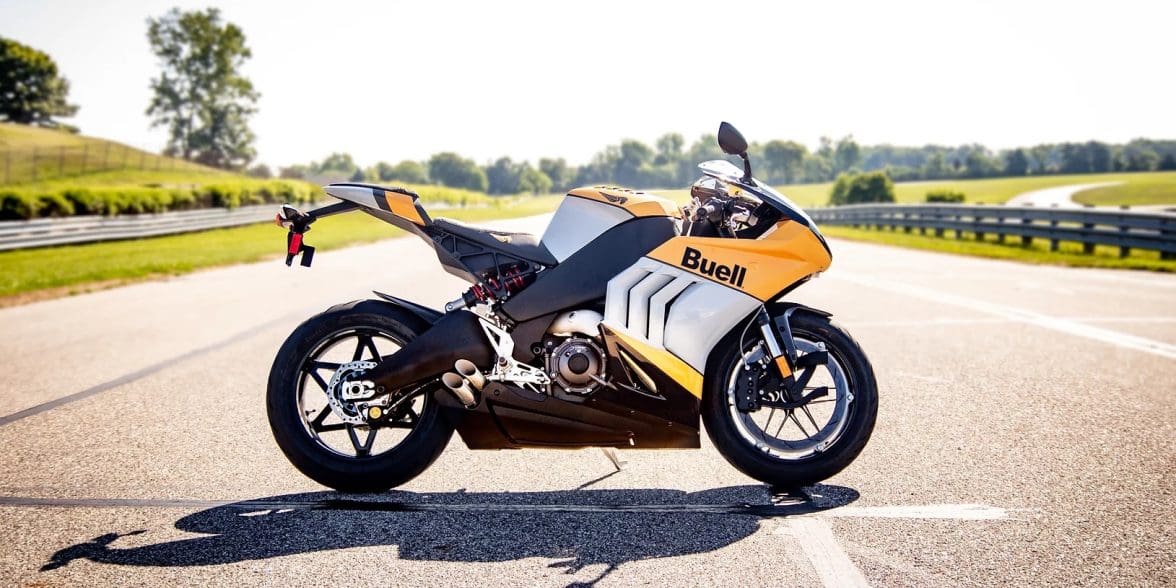If there is one name in the motorcycle world that always seemed to be at the very cusp of becoming a great manufacturer but always got the short end of the stick, it’s Buell Motorcycles. Throughout the past four decades, the name has been attached to some of the most innovative sport bikes to come from a purely American manufacturer, as the original models were race bikes first and foremost.
However, after a series of unfortunate events, Buell quietly disappeared in 2009, and many thought the story of the brand was over and done. However, in a testament to dogged American determination, Buell Motorcycles has returned, with the announcement in February of 2021 that after securing investment capital, a new bike was going to be launched in 2022 as their flagship model.
As that launch is mere months (or even possibly just weeks) away, it’s time to take a look back through the lens of history and see what went right, what went wrong, and how Buell can finally stamp their name as a bona-fide American manufacturer.
The History of Buell Motorcycles
Erik Buell & Joining Harley-Davidson
Erik Buell was what many would consider to be a prodigy in his youth. Before he was a teenager, he was already maintaining and repairing machinery, and when he reached his teens, he gained an interest in motorcycles and more specifically, motorcycle racing. As he was able to repair, tune, maintain, and in many cases upgrade the engines in his bikes, he quite literally was his own team, and was able to race on a penny and a dime when many teams were putting in hundreds of dollars per race weekend.
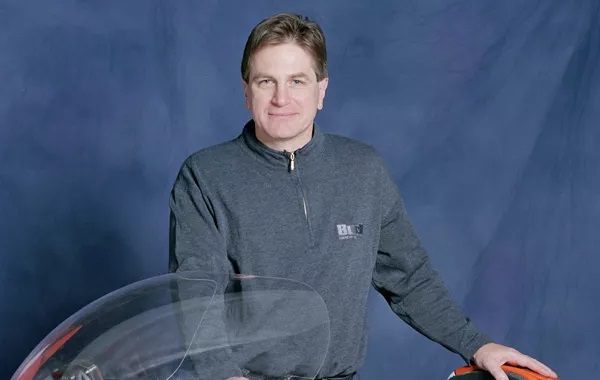
That natural talent for mechanical engineering brought him success in his early 20s, when he worked by day as a mechanic, studied engineering at the University of Pittsburgh by evening, and raced in AMA road racing on the weekends, riding a Ducati in the Superbike class before moving up to a Yamaha TZ750 for the top spec Formula One class. After graduating in 1979, he moved to Milwaukee, WI, and wouldn’t take no for an answer from Harley-Davidson, so they hired him.
From 1979 to 1983, Erik Buell was involved in some of the most exciting concept programs at Harley, including the Porsche-designed Project Nova V4 engine and the FXR cruiser. He also used his racing experience to test new motorcycles far beyond their designed specifications. He was doing well, moving up the ladder of success, until 1982, when a series of events led him to leave the company.
While Harley was paying him pretty well for his skills and talent, Buell still had that itch to race, and so he bought a limited series race bike from a small British engine company called Barton. It attracted him because of its unusual square-four 750cc two-stroke engine. However, the bike was poorly made, and the engine was unreliable to the point of constantly breaking down—yet that didn’t turn Erik off completely. Quite the opposite, in fact, as he re-engineered the frame, the engine, and the rest of the motorcycle to make a new race bike, which came to be the Buell RW750 (RW for Road Warrior).
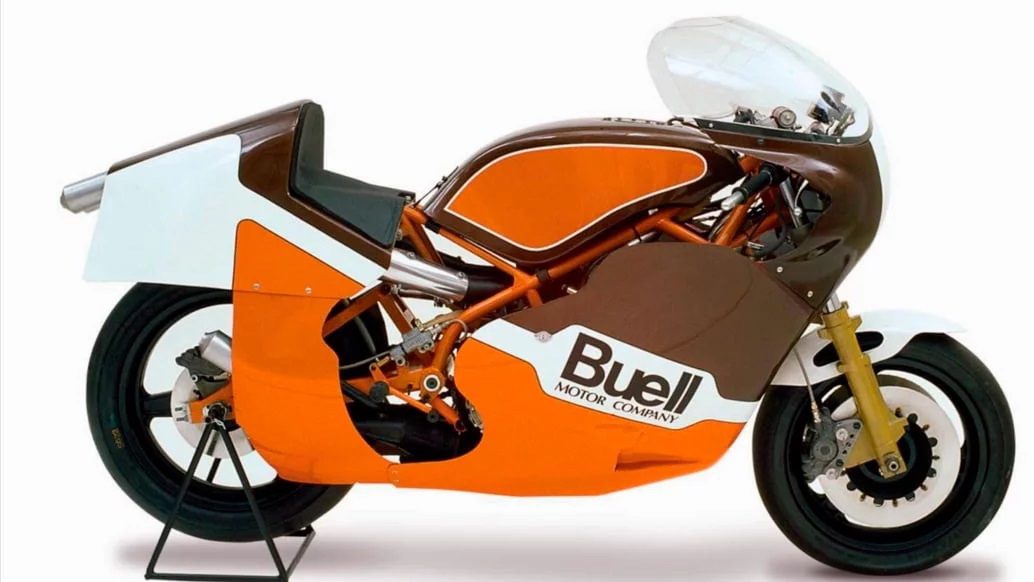
It was massively overpowered, and during a race in Talladega, Buell was clocked at 178 MPH around the banking of the superspeedway there. Barton went into receivership in 1982 and ultimately closed, but because of what Erik had done with their bike, they offered him all of the frames and engines they had in stock, the rights to the engine design, and all drawings and technical documents.
Buell accepted, but as the shipment was leaving the UK for the USA, it was delayed, and he missed out on both building new race bikes and using those bikes in the 1983 racing season.
Leaving Harley-Davidson & Forming the Buell Motor Company
As Buell was keen to keep engineering the square-four engine into a proper, reliable racing engine, he inquired with the higher-ups at Harley about getting the financial and engineering support to develop a racing program that would use it. Those higher-ups declined, based on the unreliability of the Barton engine. What Buell felt they missed was that he was proposing using the RW750 engine (the re-engineered and much more reliable engine he had developed).
After weighing the options of staying at Harley-Davidson and not being able to produce his dream race bike, or quitting and throwing himself fully into racing, Erik chose the latter. Using his saved up Harley salary and his wits, he established the Buell Motor Company and got to work on making the RW750 an outright winner.
It took him nearly a year, but by late 1984, as Yamaha TZ race bikes had been out of production for years, and the current Honda N-series race bikes were selling at nearly $30,000 per, the Buell RW750 was listed for sale at $15,900.
The bike sold decently, with a few units moving through the end of 1984, and Buell looked set up for success… until the 1985 AMA regulations were released. The Formula One category that the RW750 was built for was suddenly shuttered, with Superbike becoming the top tier class.
Buell didn’t lose heart or faith, however. As he had departed from Harley-Davidson amicably, he got in touch with them and bought up quite a few unused XR1000 racing engines, then set about designing and engineering his first superbike: the RR1000, which would end up being a very polarizing machine.
The Buell RR1000 was the first superbike to use the engine as a stressed member of the frame, mounted using “uniplanar” stiff rubber attachment points, which Buell patented and trademarked. It used a cantilevered horizontal rear suspension, mounted down low under the engine for weight distribution, and kept the rear tire planted on the track. The fairings were controversial in their appearance, but even today, not many bikes are as aerodynamic as the RR1000 was.
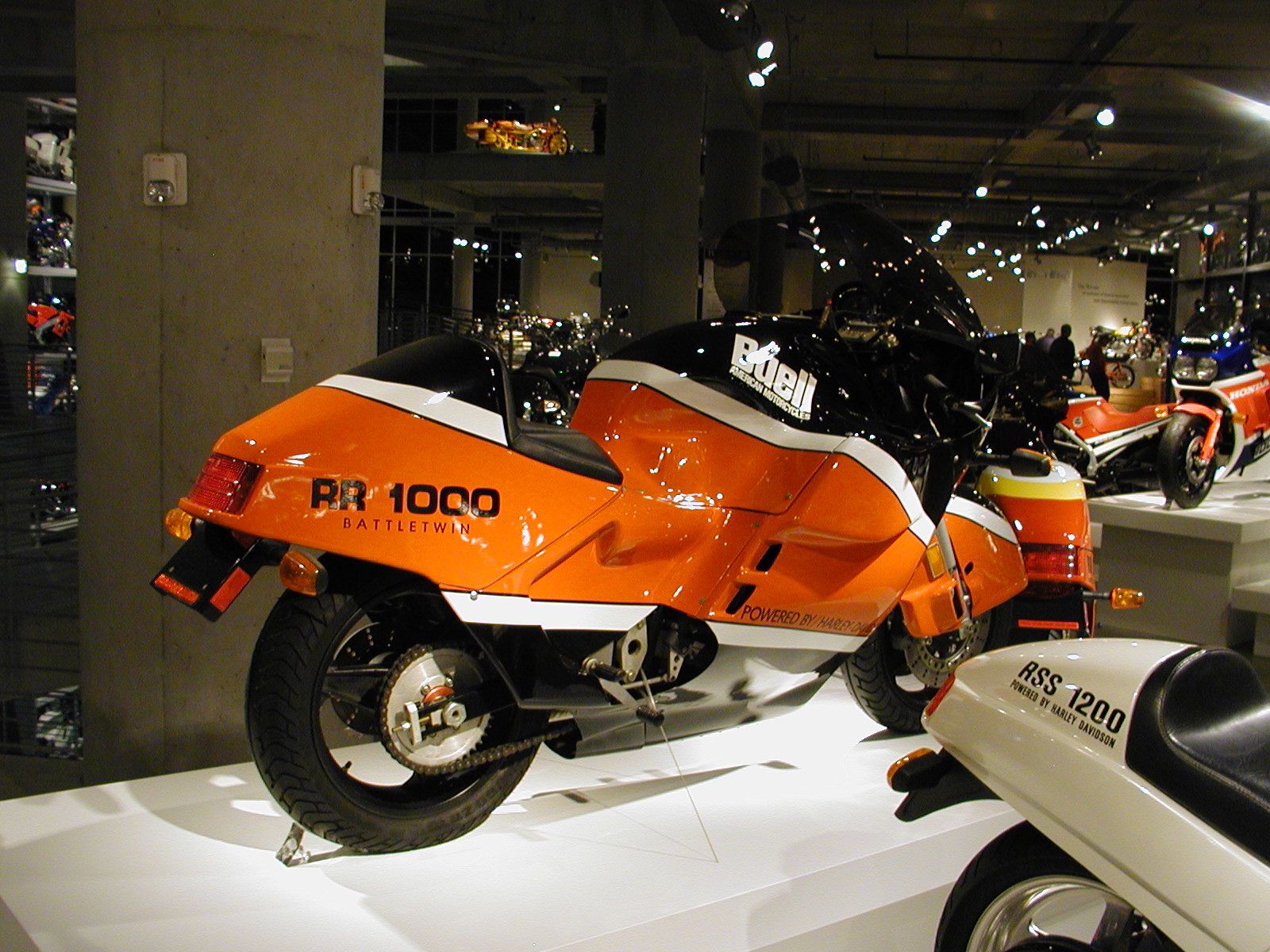
Buell also received interest from some customers not for a race bike, but for a road bike based on it. Some manufacturers would say no because of the costs involved with receiving road legal status, but using a couple of loopholes in the market, Erik was able to produce the first Buell road bike, the RR1000 Battletwin.
The Growth of the Buell Motorcycle Company
In 1987, Buell’s close friend Devin Battley, a racer and dealership owner, “smuggled” him into the annual dealers meeting, which for that year was on a cruise ship. Battley was able to convince then-CEO Vaughn Beals to give Buell a chance to earn the “performance by Harley-Davidson” endorsement that the company hoped would boost sales.
Beals, skeptical but willing to take a chance, set Buell the challenge of selling his bikes to the dealers at the meeting. At the end of the day, Erik had 25 deposits and orders for both the RR1000 Battletwin and its bigger brother, the RR1200 that used the Harley 1,203 Evolution V-twin as its heart.
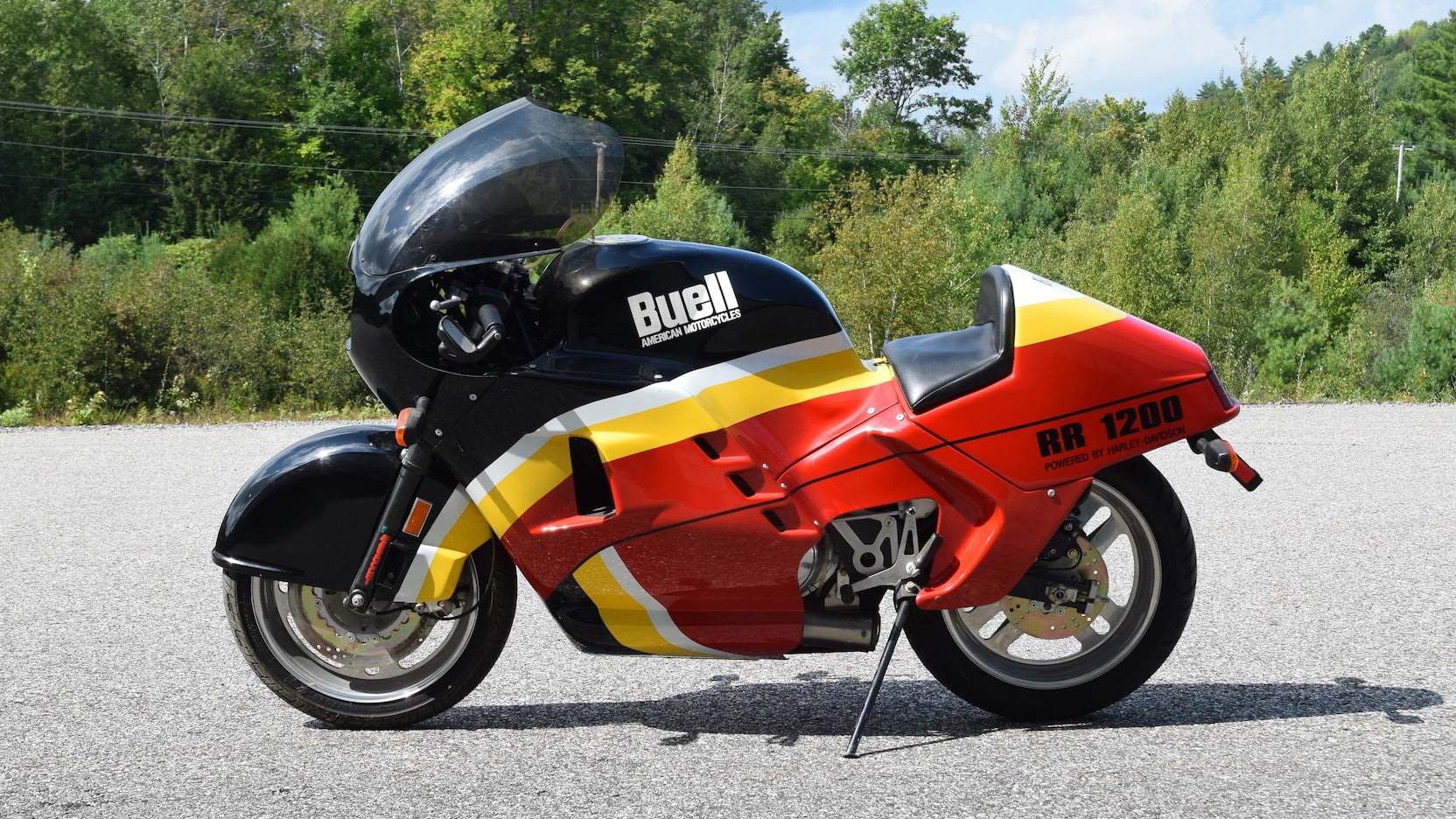
That meeting and demonstration that Buell could move bikes was the turning point. The RR1000, RR1200, and the new RS1200 (a version of the RR1200 with a pillion seat) all sold very well for a low-volume manufacturer like the newly renamed Buell Motorcycle Company.
Further developments and refinements created the RS 1200/5 Westwind and RSS 1200 Westwind from 1990 through to 1993. These bikes all used the racing engineering that Buell had worked so hard to perfect, and he even coined the term for how he approached road-based sports bikes as the “Trilogy of Tech,” with emphasis on a low center of mass for handling, low unsprung weight to reduce diving and lifting on brakes and throttle, and frame rigidity for agility.
The fact remained that all of the motorcycles were still powered by the Harley 1,203 Evolution V-twin, and still used the rubber uniplanar mounting system that had made the race bikes so competitive. Buell’s bikes were fast but comfortable and easy to handle, and they quickly gained a reputation for engineering excellence. In fact, the company was doing so well that almost a decade after he originally asked, Harley-Davidson finally decided to put their financial trust in him.
Acquisition by Harley-Davidson & the Death of the Company
The Initial Buy-In
Harley-Davidson was suitably impressed with what Erik Buell was doing with their engines, and it was then-CEO Jeffrey Bleustein that offered a deal to him that would see the two working closer together. In exchange for direct sourcing of Harley engines, instead of as a customer-manufacturer, and access to the engineering department, Buell would sell 49% of the ownership of Buell Motorcycles and receive $500,000 USD in direct investment.
Controversially, the deal also involved Buell putting his own house up as security, so that if the partnership failed, Harley could recoup their investment by selling Buell’s house. It was seen as a high-risk deal by the Harley-Davidson board because they were buying up partial ownership of a low-volume, racing-focused manufacturer, but Bleustein had been able to pitch it as turning Buell into the “skunkworks” department of Harley-Davidson.
Against pretty much all advice, Erik Buell took the deal. Either through a stroke of genius or sheer good luck, the deal paid off, with the development of the S2 Thunderbolt costing well over $100,000—using the chassis originally engineered for the RW750 reworked to fit a Harley Sportster v-twin.
When it went on sale in 1994 after a breakneck development and production cycle, Erik Buell estimated that it would sell 300 units total. Much to his surprise and elation, 1,399 S2s were sold in 1994 alone.
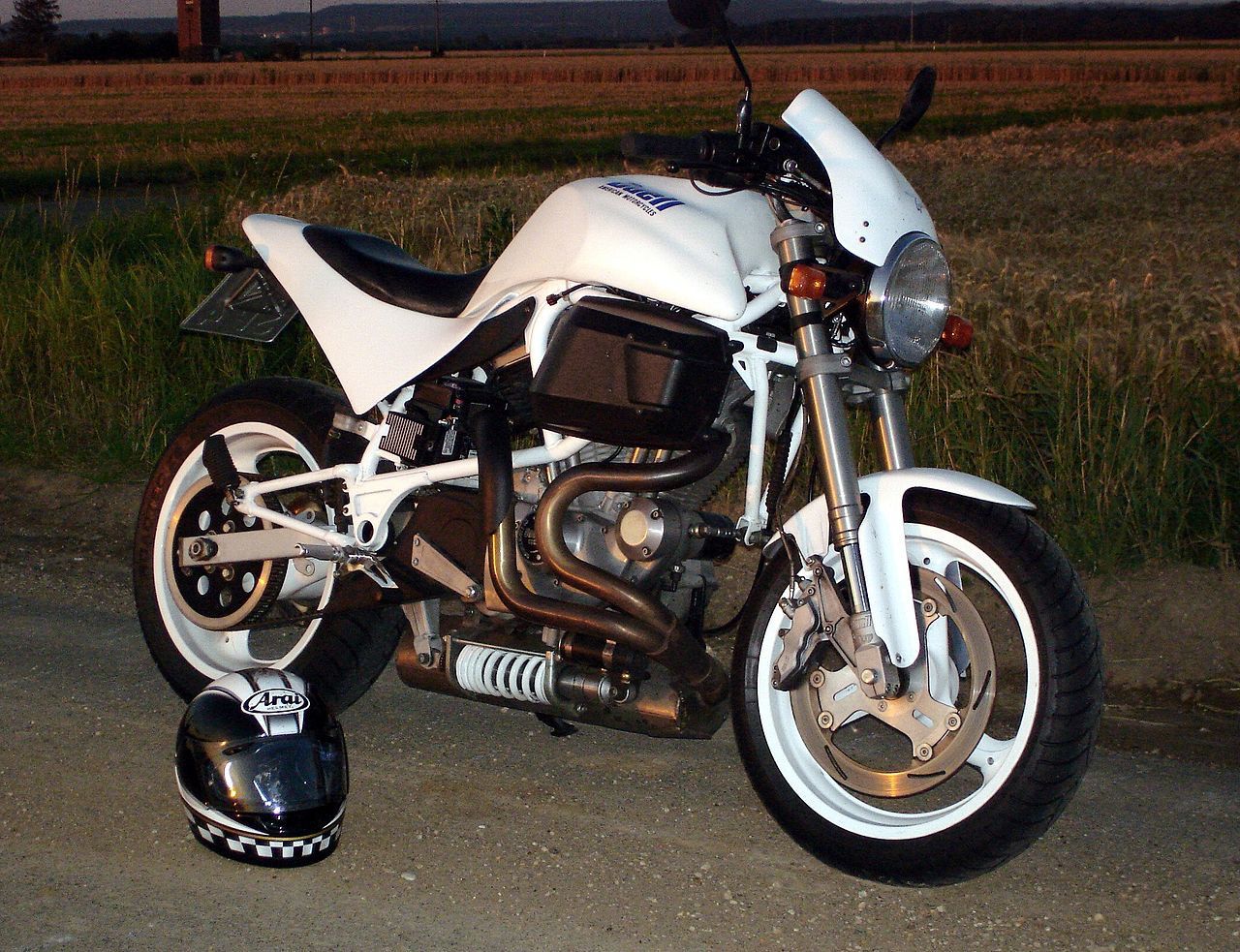
Harley-Davidson, now certain that Buell could move units, and with glowing reviews of the S2 in almost all media, invested more capital. The resulting bike, the S1 Lightning, was quite literally the RR1000 on steroids, with a headlight and license plate holder. It was also the first limited edition bike Buell had planned, with a cap at 5,000 units, and not a single one more.
The S1 Lightning sold for three years (1996 to 1998) and in the last year had a small upgrade, being rechristened the S1W (White Lightning), as it used the newly-developed Thunderstorm cylinder heads to boost power by 10 HP over the previous version’s already-powerful 101 HP.
This rapid and, frankly, astonishing success was noticed by Harley-Davidson, and in 1998, they bought a majority stake and took over the company, reforming it as a subsidiary of Harley-Davidson instead of a partner. Part of agreeing to the sale of the company for Erik was that he would still design the motorcycles, which Harley agreed to. This saw the S3 Thunderbolt, Buell’s sport touring motorcycle, and the X1 Lightning, Buell’s first direct fuel injection model, sell well from 1998 to 2002.
The Full Buyout & the Beginning of the End
It was, however, in the latter years of the 1990s that things started to take a turn for the worse. As Erik was no longer in control of the marketing, Harley-Davidson changed the image of Buell from being the performance brand of the company to being the “starter” brand. Prices and market positioning reflected this, as Buell Motorcycles were sold to young professionals so they could “experience the Harley power” before moving up to a “mainstream” Harley-Davidson bike.
As one could imagine, this did not sit well with the racer and sportbike enthusiast that was Erik Buell. He was forced into following the Harley-Davidson plan of designing powerful-but-inexpensive bikes to entice people to buy from the main brand. This ended up with two major blunders by Harley-Davidson, which all but sounded the death knell for Buell.
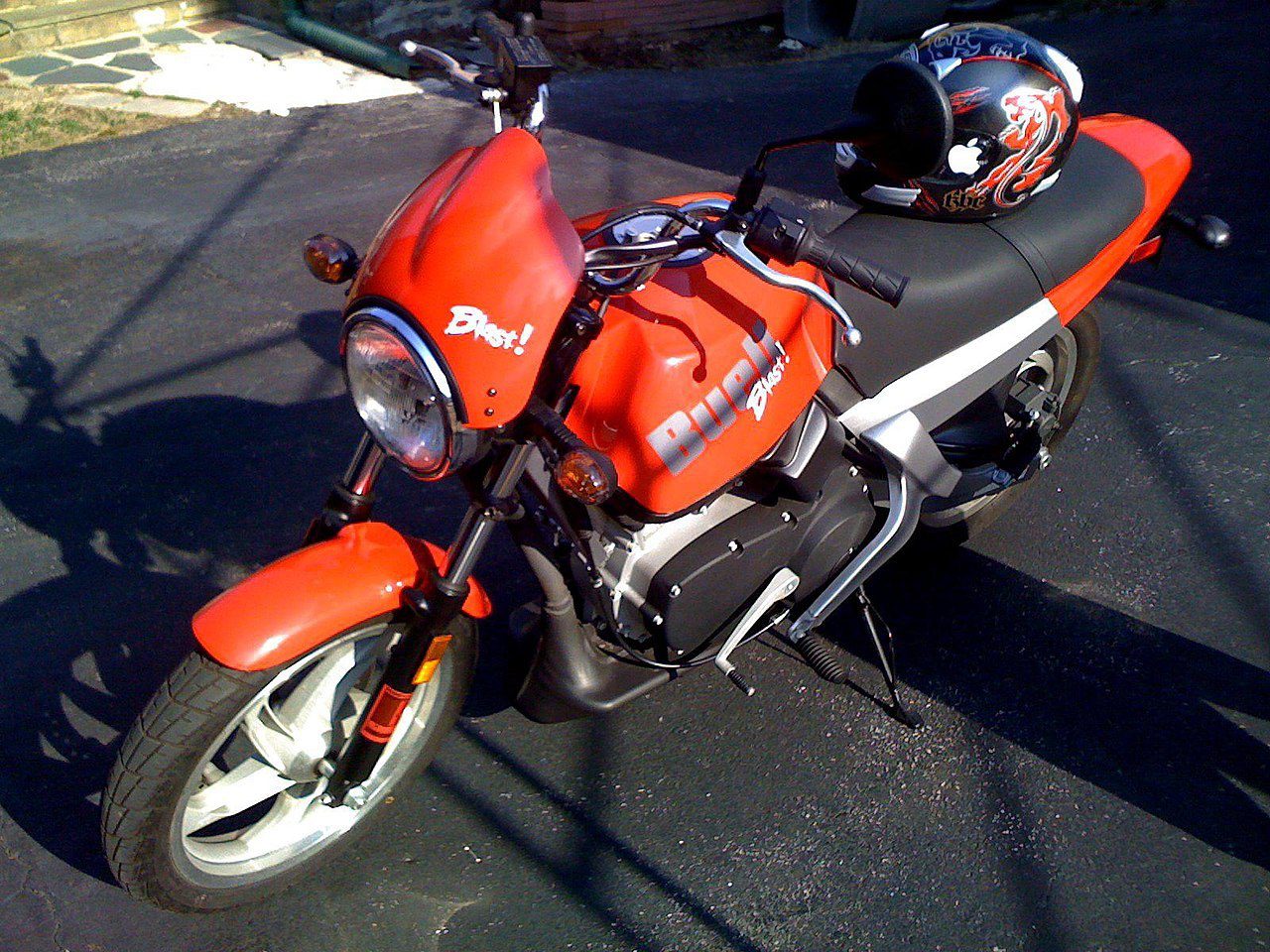
The first blunder was the desire of the Harley-Davidson higher-ups to have a make-specific training bike, which was the Buell Blast. Using Buell’s excellent frame design, they completely face-planted with the engine, which was the only single-cylinder ever to be put in a Buell. It was half of a Sportster 883 engine, was woefully underpowered, and development went over budget by 80%.
The Blasts were literally given away to training schools all over the USA to entice students to learn on a “Buell Sport Bike”, and to give them incentives upon graduating to buy a Blast from their local Harley dealership.
Because the onus of development, through some pretty complex internal routing, was on Buell, this ultimately ended up losing Buell money, while gaining money for Harley-Davidson. It was still regarded as a “technical success,” but it didn’t take off like Harley had hoped it would.
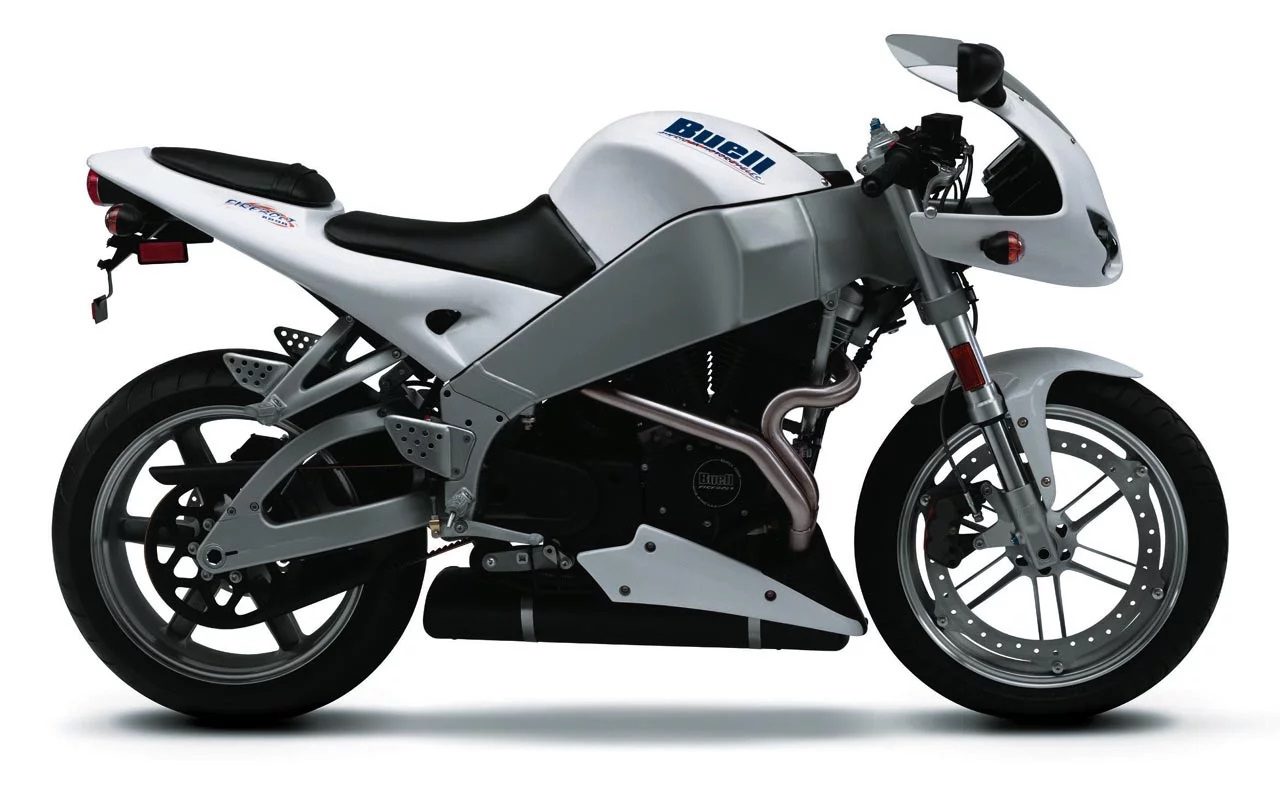
This led to their second blunder, which was when the Buell XB series of bikes were launched in 2003. Again, Buell’s technical expertise showed through with the all-new lightweight aluminum frame, and using aluminum for the swingarm and cantilever suspension that was still under the engine. The blunder was that Harley-Davidson developed the XB V-twin with absolutely no input from the smartest engine tuner in the entire company, Erik Buell.
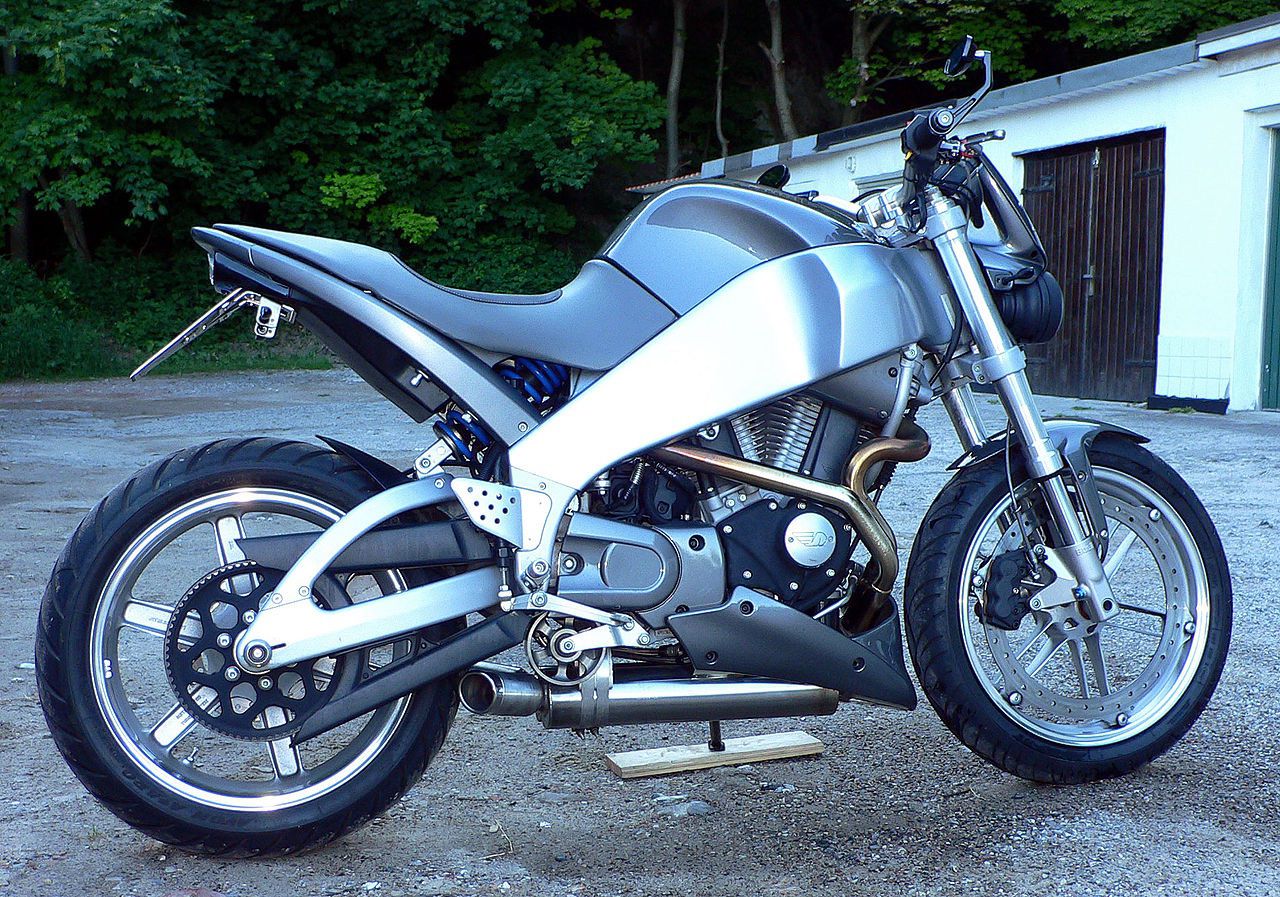
Harley-Davidson spent millions upon millions of dollars to make the XB the most powerful engine they could. It was originally supposed to have a turbocharger attached to boost it to 150 HP, but the company they contracted to develop and manufacture one, Aerocharger, was left with a sour taste in their mouth as Harley, at the 11th hour, decided to engineer one in-house.
The project went absolutely nowhere, and in the end, after all the reinforcing and internal design of the engine that increased its weight significantly, it ended up never having forced induction. It was eventually released as an overweight and underwhelming 92 HP V-twin.
The Long Fall & the End
This cost overrun was passed, naturally, to the customer, with the “introductory” model, the Buell XB9S sport bike, originally announced at $7,995 but hitting the market at $9,995. It still proved to be a popular bike, but it never sold anywhere near expected numbers.
After the sales failure of the XB9S, Harley-Davidson continually tried to revitalize the public’s interest in Buell, with bigger engines, more power, and new shapes and styles, but the damage had already been done. By the time 2009 rolled around, Buell was selling so few bikes that each bike was actually costing Harley-Davidson more in production costs than it was retailing for.
In 2009, as Harley-Davidson itself was not selling well and was feeling the financial pressure, a new CEO, Keith Wandell, was hired. Brought in to make the company profitable again in a recession economy, he took one look at the books and asked why the hell Harley-Davidson still owned and operated Buell Motorcycles. It had fallen from the excellent, innovative bikes of the 1990s to a brand of uninspired, heavy models in the late 2000s, and sportbikes by European and Japanese motorcycle manufacturers were absolutely dominant in the market.
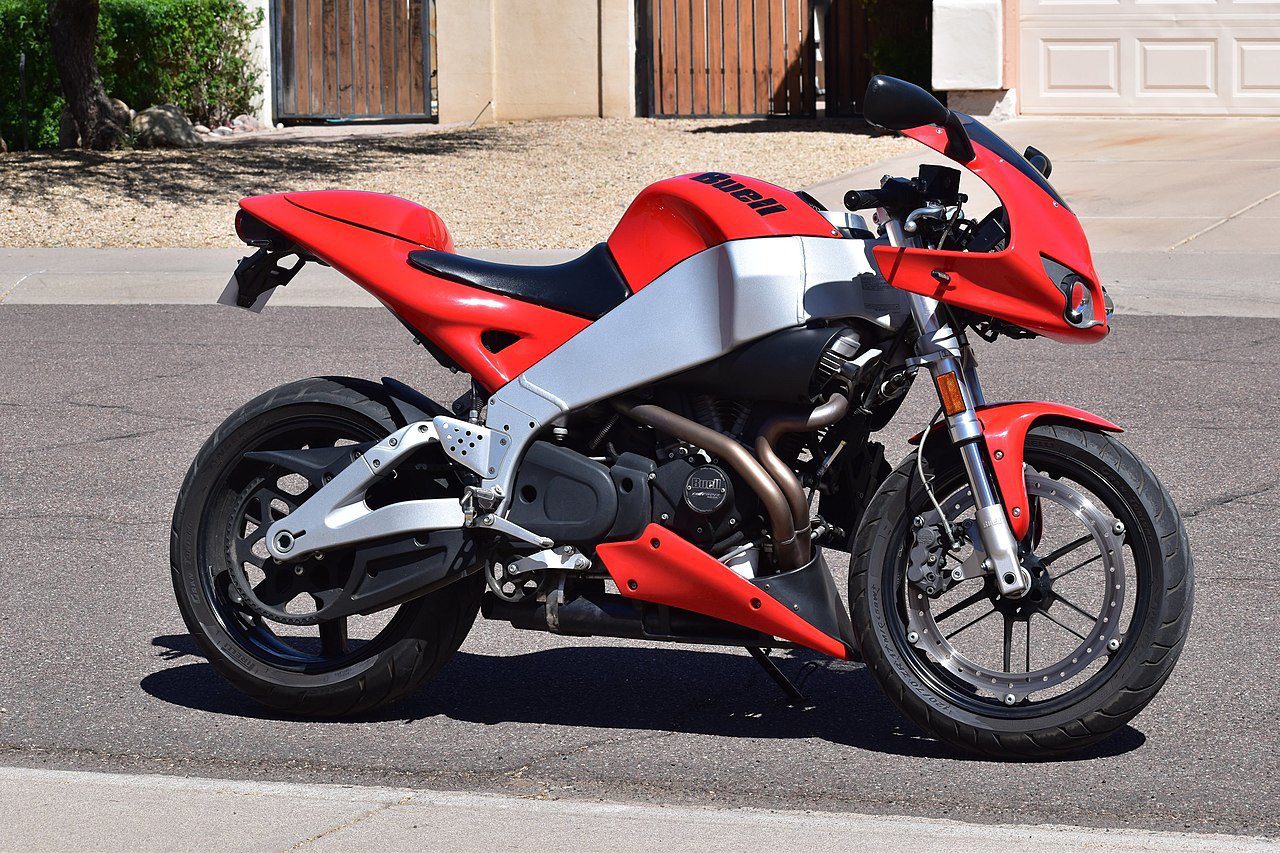
So on October 15, 2009, Harley-Davidson ceased production of Buell Motorcycles, and shuttered the subsidiary. They didn’t want to sell the company, as they did not want a competitor’s product sold through their dealerships, and there was also the ultimately egotistical thought that Buell had only succeeded because of the Harley dealer network. In any event, the Buell Motorcycle Company ceased to be on that date.
The 2022 Buell Hammerhead: The Future of the Buell Name Hinges on This Bike
After the company closure by Harley-Davidson, Erik Buell soldiered on, forming Erik Buell Racing (EBR) in November of 2009, barely a month on from the closure. EBR started as a race-only producer, with their first model, the 1190R, aimed squarely at the AMA Superbike class, and doing decently well in the hands of privateers. They started to produce street versions of the 1190R, such as the 1190RS, 1190RX, and the streetfighter 1190SX.
However, despite a partnership deal with Hero MotoCorp of India in 2013 that injected $25 million into the company for 49.2% ownership and distributing Hero motorcycles and scooters in the USA, EBR ultimately filed for receivership in April 2015.
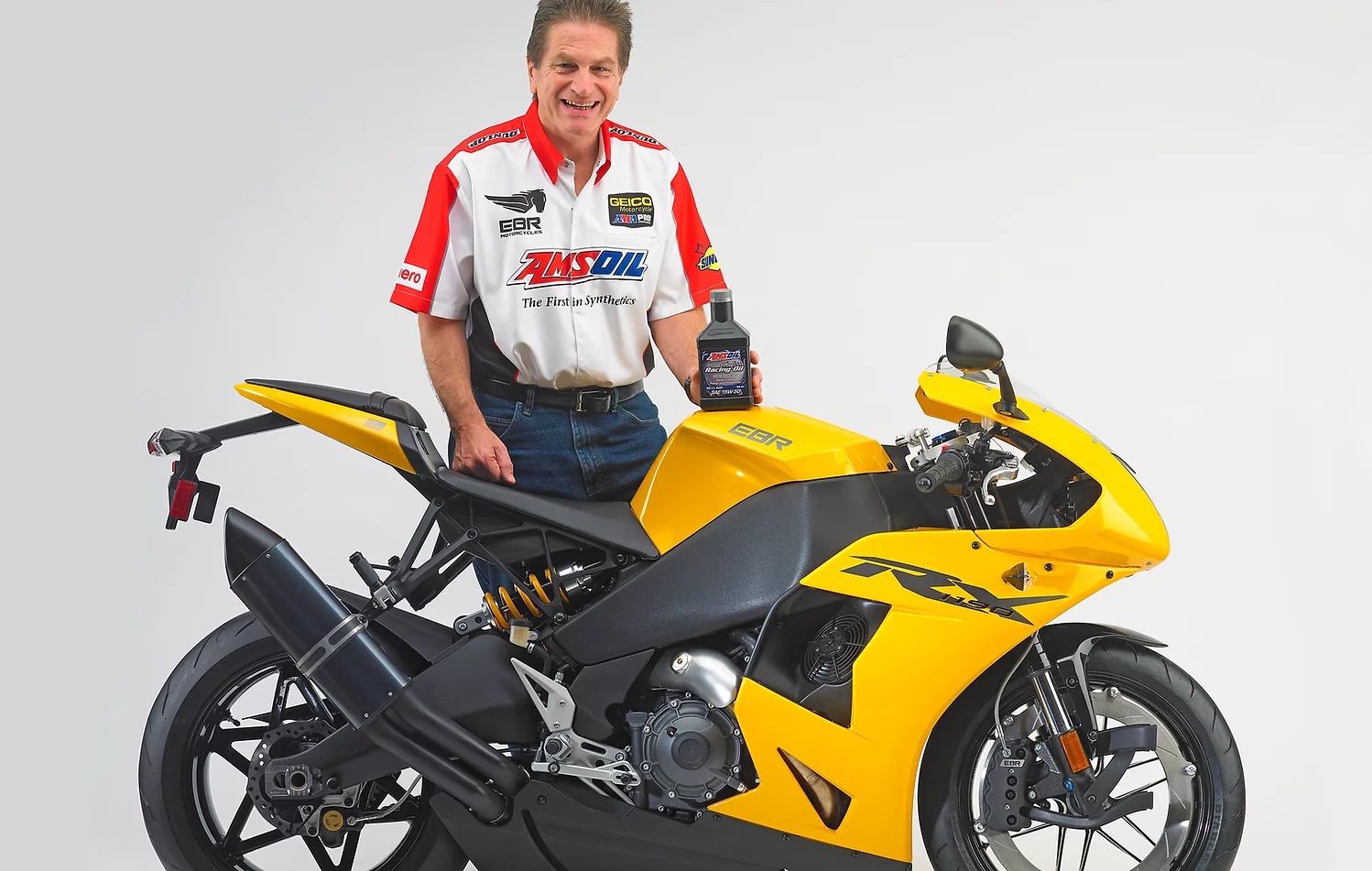
This was despite the 1190 series of motorcycles being very popular, and also astonishingly powerful for an American made superbike, with the RS producing 175 HP, and the RX and SX producing 185 HP. The receivership eventually ended when Liquid Asset Partners acquired EBR for a little over $2 million, including settling unpaid debt and unpaid wages.
However, instead of gutting the company to recover the acquisition price and ending the Buell Racing name, Liquid Asset Group made the risky call to restart production under a new name: EBR Motorcycles. Unfortunately, part of the receivership deal was that Erik Buell, now approaching his 70s, would not retain the name and would, in effect, retire.
That plan lasted for exactly 4 years before Erik, at 69 years old, partnered with a French investor group to create Fuell, a new company focusing entirely on the emerging eBike and electric vehicle market. Their first product, an eBike called the Flluid, was released in 2019, and the e-motorcycle, the Fllow, was expected to be released in 2020. However, that plan was put on hold because of the global pandemic. These bikes are now expected to hit the streets in 2022 or 2023.
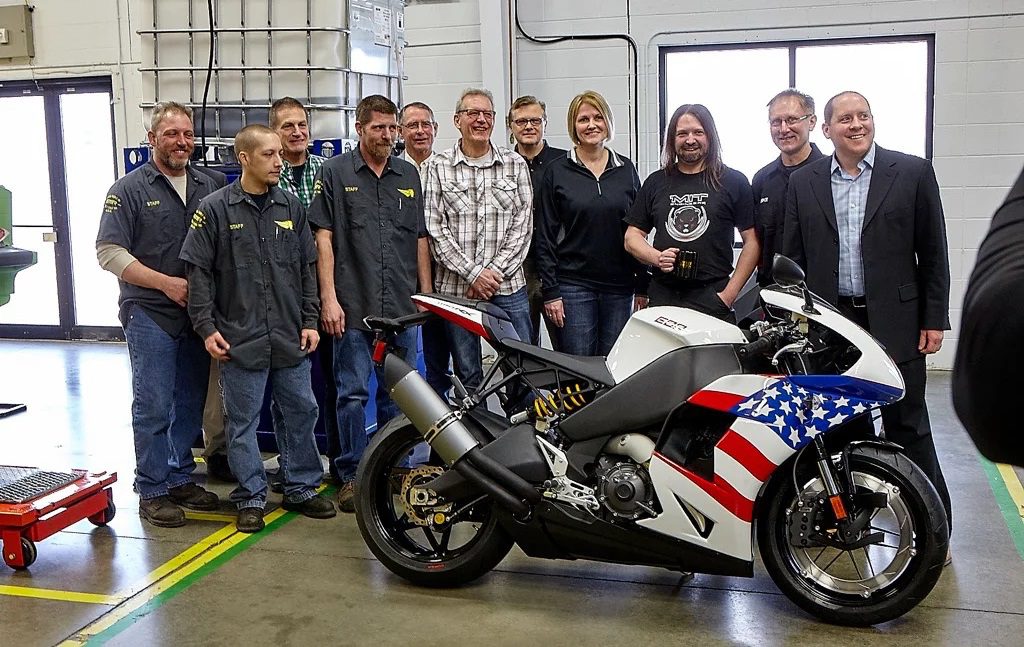
While Erik was off innovating with the French, Liquid Asset Partners made a couple of very limited edition motorcycles, including a Stars and Stripes 1190RX, while they continued to search for capital investors. While the details have been kept quite quiet, we do know that at the start of 2021, a new ownership group took the offer and bought EBR Motorcycles (plus the Buell name from Harley-Davidson), built a new factory for production, and announced the Buell Hammerhead series as a return to form for Buell Motorcycles.
Two bikes, the Hammerhead 1190 and the Hammerhead 1190SX, make up the model type, and are carbon copies of the original EBR 1190RX and 1190SX—with two major differences that may, in all fairness, be the key to the Buell name continuing. The first of these differences is that the new ET-V2 engine will have a dual injection setup, with port injection and direct “Showerhead” injection. The objective is to extract the most potential power from the least amount of fuel, which is important as the motorcycle will have to meet Euro5 emissions and California CARB ratings if it is to be sold worldwide.
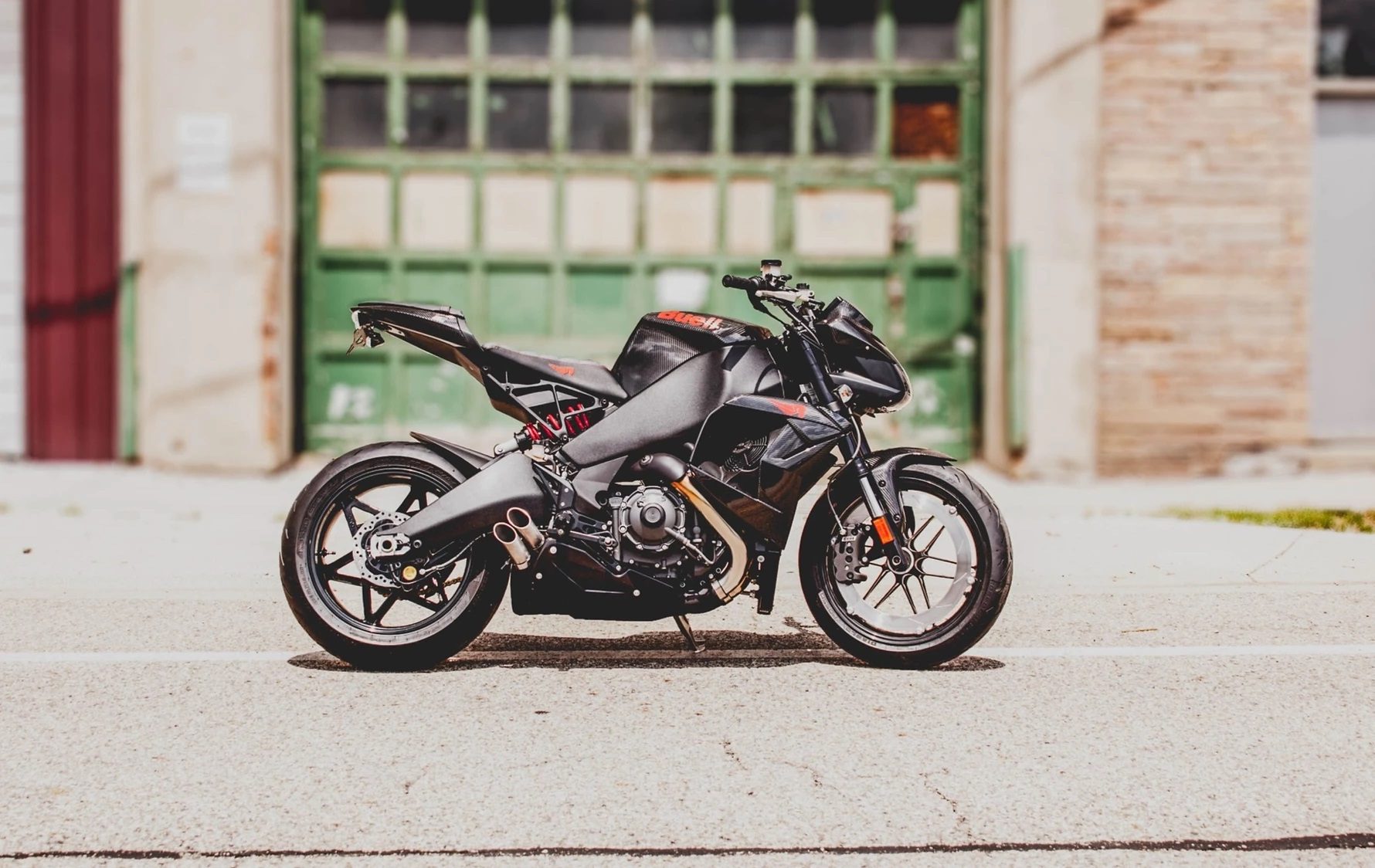
The benefit of this is that the V-twin, designed and built in co-operation with BRP/Rotax, will not lose any power. It will remain at 185 HP and 101 lbs-ft of torque despite using up to 25% less fuel, and hence producing 25% fewer emissions, to achieve that number.
The second major difference is that the Hammerhead finally does away with the Buell underslung cantilever suspension, opting for a much more standard, and hence much more owner-serviceable, rear under-seat suspension from Showa, who also provide the front suspension. This makes the bike less of an exotic item, and also, crucially, reduces the overall cost of production, which helped with setting the MSRP at $18,995.
While that sounds like a lot of money (and it is), consider that a 2022 Ducati Panigale V2 is only $1,000 less, but also only has 155 HP, 77 lbs-ft of torque, and crucially weighs about the same. The Hammerhead is most certainly the torchbearer for the Buell name, and if things go as planned, America might finally have a proper, world-class supersport manufacturer once again.


